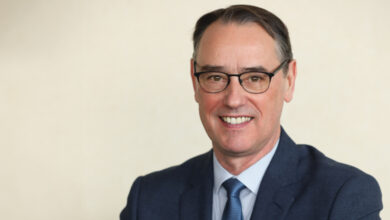Shared education: the story so far
 As the shared education advisory group continues its work, Peter Cheney examines its remit and looks back over the origins of the current debate.
As the shared education advisory group continues its work, Peter Cheney examines its remit and looks back over the origins of the current debate.
Shared schooling in Northern Ireland has a long history, with the mill schools of County Down and other local examples predating the formation of All Children Together (the forerunner of the integrated sector) in 1974.
Likewise, the policy work goes back as far as the Stanley plan in 1831. That said, moves to educate Protestants and Catholics together have been limited by political and religious opposition, and the choice of most parents to bring up their children in their own faith and culture.
Belfast republican William Drennan cofounded the non-denominational Royal Belfast Academical Institution in 1810 but Rev Henry Cooke’s statue (the Black Man) symbolically turns its back to it.
The structure of our complex education system was therefore well-established by the restoration of devolution in 2007. Integrated education refers to the sector of that name, whereas shared education is a catch-all term, which also takes in shared activities, classes and campuses (e.g. Lisanelly in Omagh).
DUP MLAs had occasionally commented that merging the sectors could tackle “duplication of services and the multiplication of costs,” as Michelle McIlveen put it in 2007. However, increasing sharing became a key message for the party in October 2010, in the light of Peter Robinson’s speech on the topic.
For the record, Robinson said that creating a single educational system was “not just an economic but a moral question” and described the status quo as “a benign form of apartheid”. The integrated sector, he added, would “never create the critical mass needed to make a real difference.”
His objection to the state “providing and funding church schools” drew strong criticism from Catholic bishops and schools, who were in turn defended by Sinn Féin and the SDLP. However, the Alliance Party and the integrated education movement welcomed the debate that followed.
The speech was seen as a strategic attempt to gain ground from Alliance after Naomi Long’s win in East Belfast but it did keep the issue on the political agenda as the Assembly election campaign picked up.
DUP manifesto proposals included a commission (potentially an all-party one) on increasing sharing and integration. Alliance, for its part, held back from calling for sectors to be abolished but set a minimum target of educating 20 per cent of pupils in integrated schools and 40 per cent in mixed schools (of all types) by 2020.
The UUP, under Tom Elliott, called for more shared campuses but Mike Nesbitt wants to move to a single overall system, determined on the ground by a changing school estate and support from local communities. The SDLP wants schools to share resources but also wants to guarantee the choice of an integrated, faith based and Irish-medium education.
Advisory group
Sinn Féin, though, was largely silent. When interviewed by agendaNi in November 2010, Caitríona Ruane sought to shift the focus from the Catholic- Protestant divide to class divisions. John O’Dowd was more strident, claiming that the DUP wanted “a schooling system that produces a ceramic vision of each other as little Northern Irelanders”.
The Programme for Government contained three relevant commitments:
- establish a ministerial advisory group to explore and bring forward recommendations to advance shared education;
- ensure that all children have the opportunity to participate in shared education programmes by 2015; and
- substantially increase the number of schools sharing facilities by 2015.
The ministerial advisory group was subsequently established on 19 July 2012, with a deadline of 1 February 2013. Its chair is Professor Paul Connolly (Head of Queen’s University’s School of Education), assisted by former MLA Dawn Purvis and PJ O’Grady, former principal of St Patrick’s College, Bearnageeha, in North Belfast.
Connolly has three main research interests: diversity and inclusion in early childhood; the evaluation of educational programmes and interventions; and quantitative methods and statistics in education. Purvis published a major report on educational disadvantage in Protestant working class areas (see page 42) in March 2011. O’Grady is an outspoken defender of Catholic nongrammar schools.
For the purposes of the group, education is defined as schooling (at all levels), youth services, pre-school education and ‘early years’ services i.e. for 0-6 year olds.
“There is the scope, and need, for more shared education which will deliver quality education to all children, as well as equality, good relations and community cohesion benefits,” O’Dowd commented. “Shared education has an important role to play and now is an opportune time to debate this across civic society.”
The definition of shared education goes wider than Catholic-Protestant and includes the “education together” of children from all ‘section 75’ categories and socio-economic groups. Schools and sectors will still have differing ownerships, sectoral identities and ethos.
Section 75 of the Northern Ireland Act 1998 categorises groups in society by religious belief, political opinion, racial group, age, marital status, sexual orientation, male or female, whether or not a person has a disability, and whether or not a person has dependants.
Under its terms of reference, the group is asked to take four factors into account:
- preferences of learners and parents in relation to shared education;
- the effectiveness and value for money of existing approaches, and of best practice, locally and internationally;
- any “barriers to the advancement” of shared education; and
- how the advancement of shared education “might address issues such as ethos and identity.”
The last point has historically been the most contentious one. Education, as Bishop Dónal McKeown has said, is “not value-free” and Catholic thinking links the school to the church and the home. Rev Ian Ellis, the secretary to the Transferors Representatives Council, believes that “the impulse of many parents is to have their children educated in schools within the context of Christian faith.” Religious ethos is, of course, intertwined with politics and culture, especially the different unionist or nationalist attitudes to sports, language, history and remembrance.
In numbers
A total of 21,170 pupils were enrolled in integrated sector schools in 2011-2012: 6.6 per cent of the overall school population. A further 9,050 Catholic pupils attended controlled schools and 1,509 Protestant pupils attend maintained or Catholic grammar schools. Those extra categories comprise another 3.3 per cent of the school population, although these also include some children who attend single-identity schools.
Across the whole system, 50.9 per cent of pupils were Catholic, 37.2 per cent Protestant and 11.9 per cent from other backgrounds. 27,906 pupils (8.7 per cent) had no recorded religious background and 1,855 pupils (0.6 per cent) came from families with a non-Christian religion. 8,418 pupils (2.6 per cent) did not have English or Irish as their first language and 3,893 (0.9 per cent) were receiving an Irish medium education.





